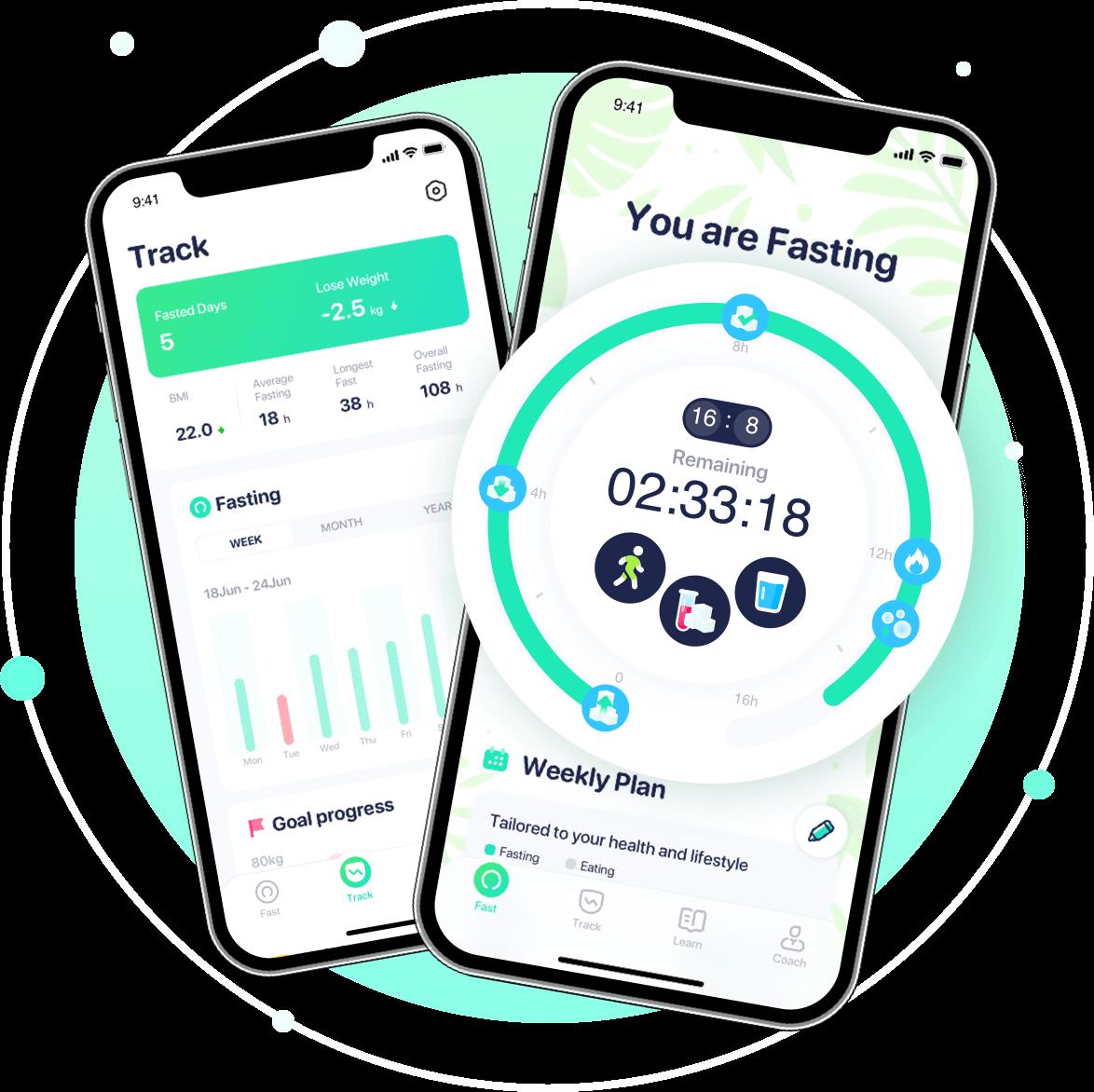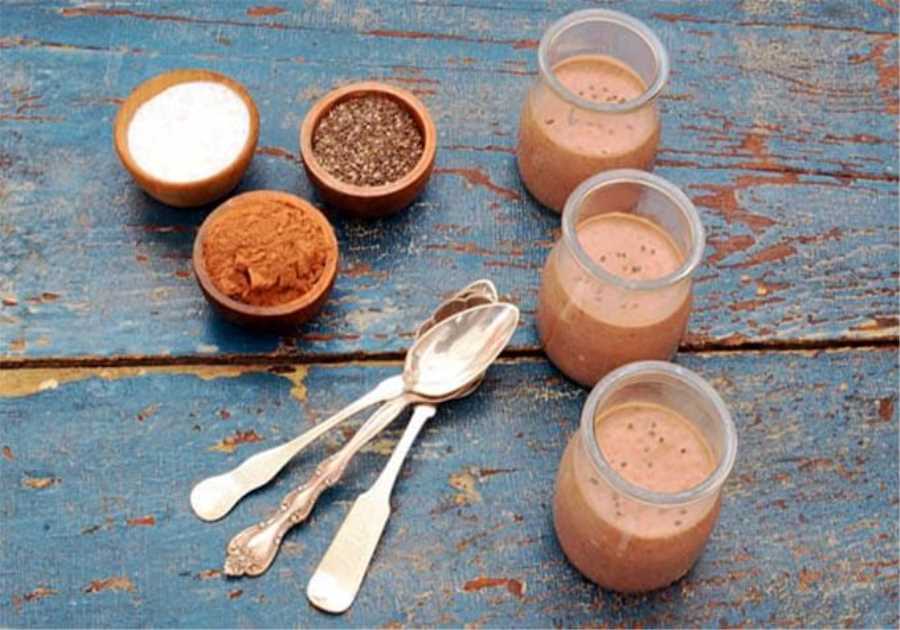
If you're on an intermittent fasting regimen, it's important to keep track of your food and exercise intake. Several apps can help you stay on track and keep track of your progress. Read on to learn about DoFasting, Ate Food Diary, Vora, and Simple. You'll also be able to track your weight history and see how much weight you've lost.
What is Intermittent Fasting?
Intermittent fasting is a dietary pattern where individuals cycle between periods of eating and fasting. During the fasting period, people typically plan to consume fewer calories than normal. A variety of apps are now available which assist in meal planning, calorie tracking, and health tracking while following the intermittent fasting diet.
What are Intermittent Fasting Apps?
Intermittent fasting apps provide users with features such as meal planners, calorie counters, and health-tracking tools to help them achieve their goals. These apps also incorporate data from other sources such as workout programs or nutrition calculators to give users comprehensive information about their overall diet and fitness habits. Some popular intermittent fasting apps offer items such as video tutorials for new users, food logs for monitoring intake, macro tracking capabilities to guide users during their fasts, and fitness reminders for when it's time for exercise.
How Can Intermittent Fasting Apps Help?
Fasting can be difficult to manage on your own; however, with the assistance of an intermittent fasting app, you can easily track your progress while keeping up with your goals. Through meal planners and calorie counting tools, users gain greater insight into their nutritional choices while taking control of their weight loss journey. Additionally, automation and reminders provide guidance throughout the process so that you don't have to worry about forgetting important diet-related tasks or skipping meals or workouts.
Ate Food Diary
If you're looking for an intermittent fasting app that allows you to share your experiences with friends and family, Ate is a great choice. The intuitive app lets you record your meals and water intake, upload pictures, and write journal entries. It also organizes your meals into a timeline so that you can share them with others. You can also use the app to track fasting windows and create custom eating experiments.
There are a variety of free intermittent fasting apps available, including Ate Food Diary, which is one of the most popular and effective. The app lets you toggle between eating windows and fasting periods, track your weight, and keep track of your progress. It also features a social media feed, so you can share your food journal with friends.
Vora
Vora is an intermittent fasting app that allows you to keep track of your eating and fasting periods. It is an easy-to-use application that doesn't have a lot of complicated features but has a community-like feel. Within just two months, the application reached 11,000 users. In that time, it has logged 40,000 facts about intermittent fasting. It also has an active community that can give you extra support and motivation.
The app is free to download and use and includes a detailed journal to track your fasts. It also includes a timer so you know exactly how long you have been fasting. You can also record customized data. It's available for iOS and Android devices. Although the app is still in beta, users can try it out before purchasing a premium version.
Simple
The Simple app for intermittent fasting is designed to make fast easy and fun. It offers a customized fasting plan, meal tracker, and expert-led advice. Unlike other apps, Simple is user-friendly and understands your goals, rather than using a cookie-cutter formula. It also shows you the changes your body experiences during different fasting stages. The app is compatible with several other health and fitness apps, making it convenient to track your progress.
The app is free for the basic account and $15 per month for the premium version. It is available for iOS and Android devices. The app offers an easy-to-use interface and customizable reminders. It also offers a statistics section to keep track of your progress.
LIFE Fasting Tracker
LIFE Fasting Tracker is an IF app that helps you schedule your fasting periods, weigh your intake, and set goals. It also includes an extensive learning library with research-based articles and tips for intermittent fasting. The app is available for iOS and Android.
It is free to use, but some features are paid for. The paid version offers a special profile trophy, customization features for fasting plans, and a handy eating window timer. Similar apps usually require yearly subscriptions.
FastHabit
If you're new to Intermittent Fasting, the FastHabit app is an excellent way to get started and stay motivated. It's easy to use and syncs with your Apple Watch and works with most fasting programs. It also shows you streaks and weekly views, making it easy to track your progress. You can also customize your goals for the fasting period. The app even keeps track of your past fasts.
The app is extremely user-friendly with a minimalist interface. It features customizable reminders and notifications to help you stay on track. You can also edit your fasts on the go and see how far you've come. It also has a recipes section to help you get started with your fasting regimen. You can also export your progress if you'd like.
WeFast
WeFast is an intermittent fast app, but it is much more than that. It allows you to journal, track your progress, and connect with fellow users who are on the same journey. It also offers tools to help you succeed in intermittent fasting like a step counter and a fasting timer. The app even offers a community of users who are using it to lose weight and feel better.
The WeFast app includes helpful fasting tips and guides and helps you set a daily fast. It also includes trophies to motivate you to reach your goals. The app syncs with your apple watch and apple health, so you can set reminders to eat and to fast at the right times. You can also use the app for free to try intermittent fasting.
Zero
The Zero intermittent fasting app is one of the most popular fasting trackers for both iOS and Android. It features an on-screen journal, statistics, and timers to chart your progress. In addition, the app has articles, research studies, and tools to support your journey. If you are new to IF, Zero can help you get started and stay motivated. Its journaling feature lets you log your weight and symptoms throughout your fast.
The Zero app also features a mood chart, which updates along with your fast. This allows you to adapt to changes in your mood and recognize trends in your fasting behavior. Zero can be downloaded for free from both Apple and Android App stores.
Frequently Asked Questions
Can I drink water if I am intermittent fasting?
Yes, you can have water even if you are intermittent fasting. You should stay hydrated while fasting as it helps to maintain your body's balance. It is important to stay hydrated when fasting for long periods of time. Certain vitamins and minerals can be eliminated through sweat and urine. It's also beneficial for digestion and detoxification processes in the body, as water helps flush away toxins from the body. To be successful with intermittent fasting, it is important to stay hydrated.
What is allowed and not allowed during intermittent fasting?
You must be familiar with the rules for intermittent fasting to get the desired results. It's not enough to eat less. You need to make sure you eat the right type and amount of food during certain times.
Intermittent fasting is a time when you can only eat food and when you have to eat no calories. These "fasting window" periods last from 16 to 24 hours. They allow your body enough time to digest complicated foods, cleanse itself, and speed your metabolism.
However, this doesn't mean you should starve yourself during fasting windows. These periods are allowed for the consumption of nutrient-rich beverages such as water, lemon water, and tea. You can also indulge on calorie-free snacks, such as vegetables or fruits. The only restriction is that these must be consumed without added fats or oil.
This doesn't mean you can eat all the high-calorie, sugary foods and sweet treats that you want after you have finished your fast. It is important to keep healthy eating habits. You can only add unhealthy snacks such as chips or chips after the recommended fasting hours have passed. You should aim to consume low-glycemic index foods in your feeding windows, and instead focus on nutritious options like whole grains and lean proteins.
Last but not least, remember that intermittent fasting can't be applied to everyone. Everybody's body reacts differently to the same diet. Consult a doctor or nutritionist before you embark on any new diet plan. This is especially important if there are any existing health conditions. Additionally, ensure you get enough rest and stay hydrated throughout the process.
Can you eat as much or as little as you wish while still losing weight through intermittent fasting?
Do you want to eat what you crave while still getting all the benefits of intermittent fasting? The answer is YES! Intermittent fasting is a way to successfully lose weight, while still enjoying your favourite foods.
With careful planning and self-discipline, intermittent fasting can be incredibly effective in jumpstarting your weight loss journey. Plan to include your favorite meals in your diet and tailor your eating times. You should also pay attention to portions and how many calories are added from snacks like sauces or dressings.
Research shows that balance is the key to successful intermittent fasting. The beneficial effects of fasting for 16-20 hour a day can't be countered by a few delicious meals. Intermittent fasting can help to increase fat burn, reduce hunger signals, improve mental clarity, and improve focus.
Intermittent fasting can be a great option for people who want to make lifestyle changes but not lose what they love. It is possible to eat with purpose and enjoy tasty foods, while drastically reducing calories. So what are you waiting for? Get started right now and you will see how amazing intermittent fasting is!
Can intermittent fasting help to shed belly fat?
Questioning the status quo is key to finding solutions. Traditional wisdom holds that exercise and caloric restriction are key to losing belly fat. But recent research suggests something much faster and more effective: intermittent fasting.
Intermittent fasting involves consuming food within a designated 8-12-hour window each day, leaving 12-16 hours of fasting between meals. Intermittent fasting means that you don't have as many calories to count or portions as when you are restricted by calorie counts.
Intermittent fasting is a way to increase metabolism and burn stored body fats more efficiently than long-term methods. Additionally, it can improve mental clarity and digestion, reduce inflammation, and reduce the risk for chronic diseases like type 2 diabetes.
The best part is that it doesn't take much effort. All you have to do is set a timer and then stop eating food until it starts again. Intermittent fasting offers a straightforward way to lose belly fat and improve health outcomes.
Intermittent fasting is a great way to jumpstart your weight loss journey, but it's important to remember that it's not a miracle cure. However, you still need to make sure that your diet is healthy and balanced. You also need to get enough exercise. Additionally, if you have any underlying medical conditions or are pregnant or breastfeeding, it's best to consult your doctor before starting a new diet.
How to do Intermittent Fasting for Beginners?
Getting started with intermittent fasting can seem daunting. You can start a successful journey to intermittent fasting by taking the right steps.
First, pick the type and duration of fasting that interests you. There are three main types: the time-restricted diet, the 16/8 method and the 5/2 diet. Time-restricted fasting entails eating only during certain hours each day, while the 16/8 method involves eating meals within an 8-hour window and skipping meals for the rest of the day. The 5 to 2 diet includes two days of calorie restriction per week with normal eating on the rest.
Second, make sure to stock up on nutritious foods that can be made quickly and are easy to eat when hungry. This includes protein-rich foods such as eggs and beans; healthy fats from nuts, seeds and olive oils; high fiber carbohydrates such quinoa or bulgur wheat; and a wide variety of fresh fruits or vegetables to provide your daily doses vitamins and minerals.
Plan your meals and how you will handle the social pressure of dining out with friends or family. Self-control is important when living a fast life. Flexibility is essential in staying focused. You should incorporate sweet spot foods that are both satisfying and not restrictive enough to undo the progress made in the last few months.
Lastly, stay motivated by keeping track of results, including body weight and measurements around the waistline, hips, or other relevant areas but don't forget to reward yourself once goals have been achieved to keep motivation levels high.
What is the most effective way to do intermittent fasting for weight loss?
Intermittent fasting is a way to change your eating habits. It's a way to time your meals so you can lose weight and fat. Regularly cycling between periods of fasting and eating can help optimize your metabolism, potentially leading to better outcomes for your health.
But which intermittent fast patterns are the most effective when it comes specifically to weight loss? There are many ways to achieve success, depending on your lifestyle and goals.
The 16:8 approach is a good fit for people who are looking to make a small lifestyle change. This method involves fasting for 16 hours straight and then eating all of your meals within an 8-hours time window -- typically ending it with an early dinner or evening snack. This strategy is a great way to begin the weight loss/maintenance process without feeling overwhelmed.
Those seeking more radical transformation may try something called 5:2 Intermittent Fasting diet. This means that you fast for two days per week and eat normal calories the rest of the week. You should aim to eat nutrient-dense foods on non-fasting day without restricting your daily calorie intake. With such a demanding pattern, discipline is essential. By tracking macronutrients as well as understanding why you need them, you can achieve your desired results much faster.
No matter which method you use, consistency is key to Intermittent Fasting success! Although one person may prefer strict adherence to IF, another person might be more successful when focusing on healthy eating whole foods.
Can I eat food even if I am intermittently fasting?
For a successful fast, it is important to nourish your body by eating the right food. While you may think that you can eat whatever you want and still reap the benefits, you must remember to follow the guidelines and restrictions of your particular fasting method.
It is important to think about what and when you are allowed to eat, depending upon your particular diet plan. Although some intermittent fasting followers adhere to stricter rules than others, it is best to only eat food during your designated feeding time.
You should remember that nutritiously dense snacks with healthy fats, proteins and carbohydrates are always a great choice. This will help you avoid hunger pangs throughout your fasting period. Calorie restriction shouldn't be approached in an all or nothing manner. Even if you do make mistakes, it won’t stop your progress.
It is also beneficial for many to record their meals in order to stay more aware of their dietary habits. This will allow them make better choices regardless of the time they eat. To maximize the benefits of intermittent fasting, it is important to avoid unhealthy processed foods.
Statistics
- When diet composition was controlled, most protocols were consistent with Health Canada and American Heart Association guidelines: 55% carbohydrates, 20% fat, and 25% protein. (ncbi.nlm.nih.gov)
- IF trials found weight loss of 0.8% to 13.0% of baseline weight with no serious adverse events. (ncbi.nlm.nih.gov)
- Fat consumption was examined in 1 study, which compared dietary fat intake of 45% versus 25% at the expense of carbohydrate intake. (ncbi.nlm.nih.gov)
- When diet composition was controlled, most protocols were consistent with Health Canada and American Heart Association guidelines: 55% carbohydrates, 20% fat, and 25% protein. (ncbi.nlm.nih.gov)
External Links
nejm.org
ncbi.nlm.nih.gov
- The MATADOR study reveals that intermittent energy restriction can improve weight loss in obese men. PubMed
- INTERMITTENT FASTING and HUMAN METABOLIC Health - PMC
annualreviews.org
academic.oup.com
- Intermittent fasting has an impact on the body's composition and clinical health markers. Nutrition Reviews
- Effect of an Intermittent Calorie Restricted Diet on Type-2 Diabetes Remission: A Randomized controlled Trial
How To
Tips and tricks to stick to an Intermittent Fasting Program
Intermittent eating is a popular method for weight loss. While intermittent fasting can improve your health and help you reach your goals, sticking to a consistent schedule can be challenging. Here are some tips and tricks to help keep you on track.
-
Find a routine that works for you: Everyone is different, so it's important to find one that works for you. Some people prefer eating earlier in the evening and going fast the next day. Other people prefer eating later in the afternoon and going fast the next morning. To find what works best for your needs, try out different routines.
-
Healthy snacks are important: If you are fasting for a long time, it is essential to keep your body nourished. Healthy snacks such as fruits, nuts, seeds or fruit can help you keep your energy up, and your hunger under control.
-
Plan: Planning will make it easier to stick to an intermittent fasting plan. Consider preparing your meals in advance or packing healthy snacks for work or other activities to help you stay on track.
-
Stay hydrated. Water is a great way to keep full and satisfied, even while fasting. Take 8-10 cups of water every day, and you might consider adding in other low-calorie, hydrating drinks like unsweetened tea or herbal tea.
-
Flexibility is a virtue: You can be flexible with your intermittent fasting program. Life happens and you might need to change your routine from time to time. Don't worry if something goes wrong.
You will need to practice and be consistent with your intermittent fasting. With the right mindset, and some helpful strategies, you can make it a part of your healthy lifestyle. You can create a routine that suits you and helps with your health goals by trial and error.






